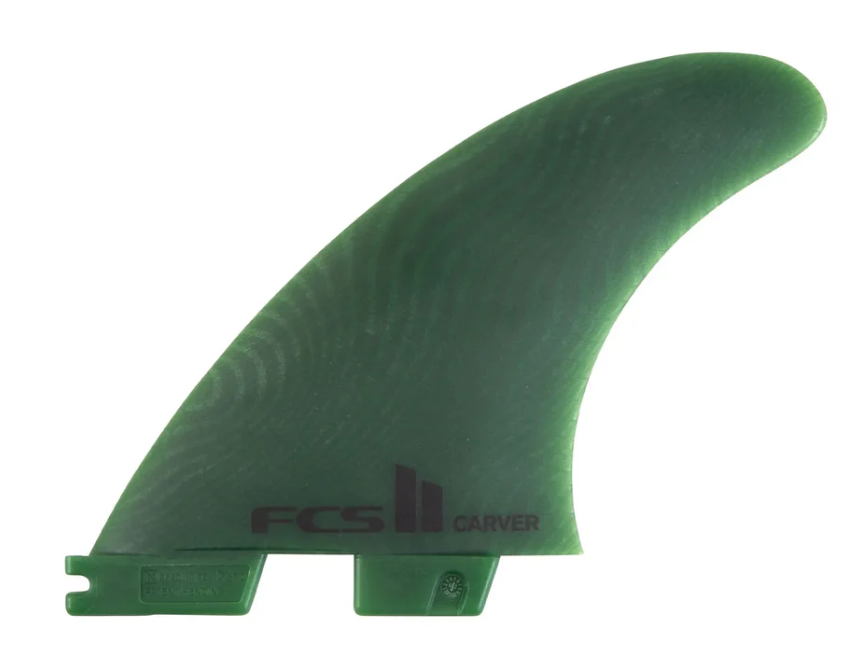Description
The Carver template in Neo Glass Eco offers powerful, drawn-out turns and excels on open face waves. Constructed with 50% glass and bio-resin, the Neo Glass Eco Carver has a low impact construction with high impact performance that’s recommended for lighter more agile surfers.
Overview
- Designed for powerful, drawn-out turns with added hold.
- Elongated template with high degree of sweep provides exceptional hold off the bottom and when carving on the open face.
- Ideal for power surfers who like to push hard against their fins and draw out their turns.
Ideal Conditions
- Open face, down-the-line waves, particularly good in point and reef breaks.
Board Types
- Designed to fit the FCS II Fin System.
- Recommended for boards with deep concaves and moderate-to-extreme rocker.
Fin Family
- Carver: Find Power. Powerful, drawn-out turns with added hold.
Neo Glass ECO Blend
At FCS, we’ve made it our mission to minimise our footprint by designing high quality products that use low impact, sustainable materials. Constructed with 50% glass and bio-resin, the Neo Glass Eco Blend range has a low impact construction with high impact performance that’s recommended for lighter more agile surfers. The new range also sees reduced use of fossil fuels and a smaller carbon footprint than traditional materials.
Sustainability & Community
Our Eco Resin is created by Arkema, a founding member of Pragati, the sustainable castor initiative. Pragati trains farmers to build capacity, improve yields, and reduce environmental impacts, thus helping them to cultivate castor beans effectively and ecologically. The initiative also provides educational materials to improve the skills and knowledge of the local farmers, to improve their income, and to ensure better health and living conditions.




